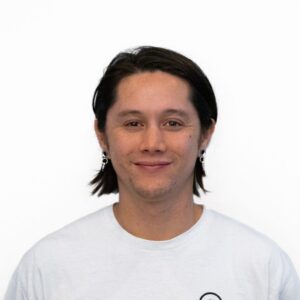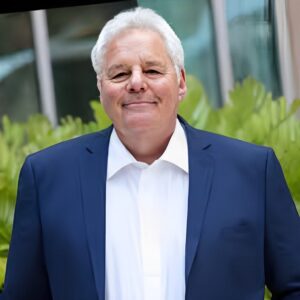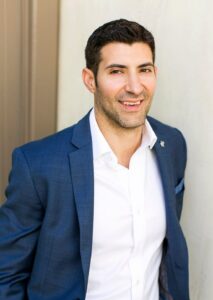An Interview With Fotis Georgiadis
Your refined plan should clearly tell you how much investment money you’ll likely need and when. There are many ways to raise capital — venture capital can help you scale, attract top-notch people to help and can help you cash out as the company goes public or gets sold. You just must be sure that is what you want, as venture capital needs an exit or a way to get a multiple on their investment. Typically, that comes through a public offering, a merger or outright sale.
As a part of our series called “Making Something From Nothing”, I had the pleasure of interviewing Jim Walsh. Walsh is the creator and co-founder of Kimo Sabe Mezcal. Mezcal is the broader category of tequila, agave-based liquors. His idea was to create a sustainable mezcal of top quality, and Kimo is now a triple gold medal winner and named “Best of Class International Specialty Spirit” by the American Distilling Institute (ADI) Spirits competition. He is also the founder of Hawaiian Vintage Chocolate. His idea led to moving the family to Hawaii for a “1950’s-style” family experience, starting the first chocolate company on the islands. He is also a founding member of the Center for Investigating Healthy Minds at the University of Wisconsin Medical School and chairman of Mind Matter AI.
Thank you so much for doing this with us! Before we dive in, our readers would love to learn a bit more about you. Can you tell us a bit about your “childhood backstory”?
I was born in raised in the heartland of America during the post-war Eisenhower years. My father was the only doctor in a small town, and I was raised as the youngest of four boys. My family infused me with a strong sense of community, duty, hard work, doing for everything possible to help others, and our home was filled with faith in God and pride in our Country. The fields, hills and plains of the surrounding countryside were filled with rich soil deposited 12,000 years prior by the terminal end of the last great American glacier. The rhythms of the area’s small family dairy farms defined each season for me — spring started when the it was time to plant the garden, summer when I sold the raspberries and strawberries of our garden to tourists driving through town, fall when we harvested the apples for homemade apple and finally harvesting the pumpkins. Winter was a world onto itself when all the land was quiet and white, with the occasional five AM shoveling I would do for the neighbor ladies. It was truly the All American experience that many dream of.
Can you please give us your favorite “Life Lesson Quote”? Can you share how that was relevant to you in your life?
The quote is from Thomas Edison, he said, “Success is 10% inspiration and 90% perspiration.” To phrase it another way that’s more distinctly related to business, and how I’ve always viewed my own businesses, “Success comes 10% from creativity and 90% from persistence.” Edison sums it up beautifully after his 25,000th failed attempt to create the right filament for his electric light. When he was asked how he felt to have failed so often he replied “I haven’t failed I just found 25,000 ways that won’t work.
The quote illustrates what you need to learn to succeed as an entrepreneur. You will fail numerous times. You will want to quit. You will think the burden of your inspiration too heavy for you to carry to fruition. The universe will test your commitment at every turn. 90% of new ideas never see the light of day for these reasons. The 10% that succeed do so because the entrepreneur never lost their faith and belief in their vision.
Is there a particular book, podcast, or film that made a significant impact on you? Can you share a story or explain why it resonated with you so much?
Absolutely, when I was in high school a mentor recommended I read, in tandem, the Tao de Ching and Atlas Struggled. Together, their lessons helped me begin to craft a road map for the future by combining the two key themes of these novels: harmony through partnership with the life force and personal excellence.
Ok super. Let’s now shift to the main part of our discussion. There is no shortage of good ideas out there. Many people have good ideas all the time. But people seem to struggle in taking a good idea and translating it into an actual business. Can you share a few ideas from your experience about how to overcome this challenge?
We all want to see success in business as a logical recipe, or equation, to be copied. If that were indeed possible, instead of the current rate of 11 out of 12 businesses failing, you would likely see 11 out of 12 succeeding. People ask me this all the time as I have started businesses since I was eight years old in many different fields. I tell them there is only one answer. Business I’ve started with the best ideas, the best funding and the best teams didn’t last. Others that had everything stacked against them have succeeded to the point of changing their respective industries.
Throughout years and years of trying, succeeding, and failing, as Edison did, I found what I believe to be the most critical element for predicting success in a business. Of course, there are many factors, but without this one no idea will succeed. The most critical component for turning your idea into a business is absolute and steadfast belief, non-ambiguous belief in your vision.
This type of belief creates inexhaustible passion for your vision. Deep inside, you just “know” that you are partnering with the life force that runs through you. Remember I mentioned earlier my high school experience with the Tao de Ching? The name literally means the Path or the Way (of Life), and it wonderfully portrays how partnering with the Life Force is essential to the continuing process of Life. You are the Junior partner in the creative process. Regardless of your skill set, education or resources, we are filled each day with creativity, some of it is expressed in ideas, some in motion, some in art, but every single day you are an instrument for creation. Life Force expresses through you. It is the central theme of being alive, to keep moving forward seek higher and higher unity. Understanding that you are the messenger of a message greater than yourself, when truly felt at an ontological level, there you will find the deep well of belief. It is our mission to partner with the life force in order to achieve harmony.
Recent brain research tells us this type of belief is not formed in the logical executive center of our brain, it is formed and nourished in the parietal lobes. Parietal lobes are most often associated with our sense of being connected to something -Other than ourselves. It is the area that lights up when we feel that sense of -Unity consciousness from contemplation. It is the spot intentions go to live. It is the connection to vision.
Our prefrontal cortex is our executive “get stuff done” center responsible for shaping that vision into a workable plan and structure. It’s the operator. Most new business operate out of the frontal cortex and believe “doing” is the key to success. Belief is first step, and once deeply installed, your COO is invaluable to shape and organize the effort.
Often when people think of a new idea, they dismiss it saying someone else must have thought of it before. How would you recommend that someone go about researching whether or not their idea has already been created?
The answer? That matters far less than your belief and faith in your vision. Once that is solidified, you have do your homework. Get out there and research, talk with everyone you can, read books on it, gather the facts. There is no substitute for this process. It helps you shape your vision to fit to the needs of the marketplace.
That’s the fun of a new idea — the journey to market. Be adaptable, learn to pivot, the soul of your vision is true; it’s the form you are now perfecting.
For the benefit of our readers, can you outline the steps one has to go through, from when they think of the idea, until it finally lands in a customer’s hands? In particular, we’d love to hear about how to file a patent, how to source a good manufacturer, and how to find a retailer to distribute it.
Here is when the second book I read in high school, Ayn Rand’s Atlas Struggled, comes into play. Like the heroes portrayed in that book, as an entrepreneur, you are about to begin a hero’s journey. Learning how to navigate that journey — how to organize, to plan, to discriminate and mostly importantly how to recruit outside energy for your vision so it can live beyond you is truly soul shaping. Much of this knowledge comes from everyday discipline.
As Dr. Robert Moore, the esteemed psychologist, would tell all when asked “What’s the key to success in business and life?”. His answer was “Practice the Presence” everyday. While it may sound slightly esoteric, what he meant was to keep in mind your partnership with the Life Force and do the work. It is that work where you will naturally identify the key players you need to recruit to expand your vision (partners, distributors, attorneys, copackers, retailers). See yourself succeeding — who is that person — what have they learned — what is important to them at journey’s end? Your answers will come from this process.
What are your “5 Things I Wish Someone Told Me When I First Started Leading My Company” and why? (Please share a story or example for each.)
- Love the journey
- Be bold
- Don’t give up
- Ask for Help
- Honor yourself
Let’s imagine that a reader reading this interview has an idea for a product that they would like to invent. What are the first few steps that you would recommend that they take?
Take time to connect with your Life Force. It wants your partnership. Get comfortable with this state of high excitement. Don’t be in a hurry, as this period of your life will be outside of everyday time and space. It’s a calling. Heed the call. Then engage your COO mind to assemble the facts, resources, and people to create a flexible and dynamic plan. Then act. Create a feedback loop that keeps you focused and in touch. No new businesses follow the same story arc.. The hero begins on their adventure having lots of fun and meeting amazing people. Then the journey starts to get long and not so fun. Your fortunes seem to change, creating doubt and fear. It may even feel that you are getting crushed by the weight of the vision and effort it takes. This is a test. You can no longer do it by yourself, so you ask for help from your Senior Partner humbly but with deep belief. Then, slowly, the fates start to change and the answer to your request cones in a way far more elegant than your logical mind could conceive. Final chapter you arrive at your destination to find yourself a different person then who started.
There are many invention development consultants. Would you recommend that a person with a new idea hire such a consultant, or should they try to strike out on their own?
Absolutely, if you can find a successful consultant or plan, take advantage of it. My high school friend turned his family’s root beer stand into the 75th largest food company in the USA by initially hiring a consultant who showed him how create a franchise system around his way of making hamburgers and ice cream treats. The necessary disciplines, the best practices for creating and running a business are often codified by consultants or systems providers.
What are your thoughts about bootstrapping vs looking for venture capital? What is the best way to decide if you should do either one?
Your refined plan should clearly tell you how much investment money you’ll likely need and when. There are many ways to raise capital — venture capital can help you scale, attract top-notch people to help and can help you cash out as the company goes public or gets sold. You just must be sure that is what you want, as venture capital needs an exit or a way to get a multiple on their investment. Typically, that comes through a public offering, a merger or outright sale.
Ok. We are nearly done. Here are our final questions. How have you used your success to make the world a better place?
By continually partnering with the creativity of Life Force and doing my work to strive for excellence.
You are an inspiration to a great many people. If you could inspire a movement that would bring the most amount of good to the most amount of people, what would that be? You never know what your idea can trigger.
Changing the way humans think. By teaching our children quantum psychics in early school they will understand their true potential as co-creators. They are born feeling it without knowing why so teaching them how creation occurs at the quantum level will create new thinkers seeking new solutions to the work of being human.
We are very blessed that some of the biggest names in Business, VC funding, Sports, and Entertainment read this column. Is there a person in the world, or in the US, with whom you would love to have a private breakfast or lunch, and why? He or she might just see this if we tag them.
Elon Musk. He is a committed partner to the Life Force, in fact he beliefs himself an Avatar for the Life Force. Talking with him could well be a conversation with a higher energy.
Thank you for these fantastic insights. We greatly appreciate the time you spent on this.
Making Something From Nothing: Jim Walsh of Kimo Sabe Mezcal On How To Go From Idea To Launch was originally published in Authority Magazine on Medium, where people are continuing the conversation by highlighting and responding to this story.



